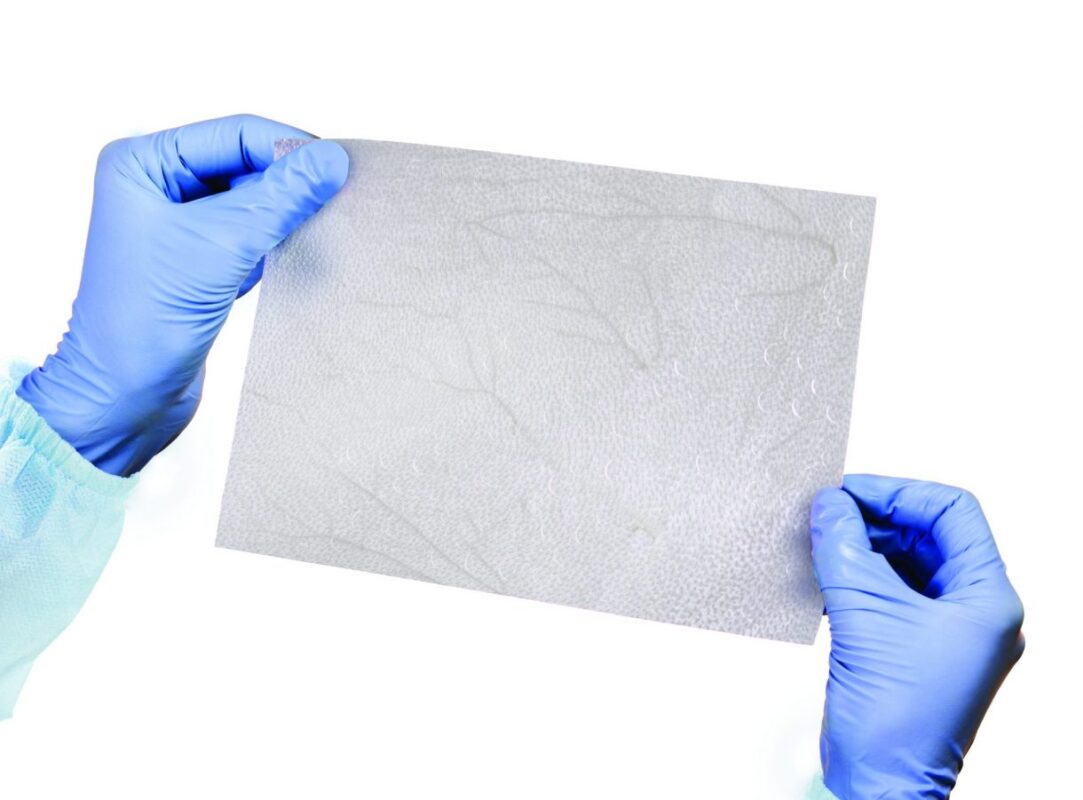Endoform Natural
Endoform Natural: A new retrospective study of real-world data (‘RWD’) has shown significantly improved wound closure times for diabetic foot ulcers (‘DFU’) and much greater probability of wound closure in wounds treated with Endoform™ Natural, compared to wounds treated with a traditional collagen dressing.
Endoform Natural is manufactured and distributed by soft tissue regeneration company Aroa Biosurgery Limited (ASX:ARX, ‘AROA or the ‘Company’). This is the first large retrospective analysis comparing the healing efficacy of Endoform Natural to collagen/oxidized regenerated cellulose (‘ORC’) and is the first large clinical study comparing advanced extracellular matrix (‘ECM’) technology to an older style reconstituted collagen product.
The findings have been published this week in a study titled “Retrospective Real World Comparative Effectiveness of Ovine Forestomach Matrix and Collagen/ORC in the Management of Diabetic Foot Ulcers” published in the ‘International Wound Journal.’
The study is online at https://onlinelibrary.wiley.com/doi/10.1111/iwj.13670.
About the study
The retrospective study employed a data set of patients treated in U.S.-based wound care centers for their DFUs where treatment included either Endoform Natural or collagen/ORC. It used existing wound data, with minimal inclusion or exclusion criteria. As such, the study captured ‘real-world’ use of both products from 2222 qualifying DFU wounds from 1590 patients, extracted from a wider data set of over 31,880 wounds in over 25,760 patients.
Of the 2222 qualifying wounds analyzed, 1150 wounds had been treated with Endoform Natural and 1072 treated with collagen/ORC to compare the median time for wound closure, percentage of wounds healed at 12-, 24- and 36- weeks and probability of wound closure.
Key findings
The time to wound closure for all wounds was 1.9 weeks faster in the Endoform Natural group relative to the collagen/ORC group. This represents a reduction in time to wound closure of 11.3%. The percentage of all wounds closed at 12-, 24- and 36-weeks also increased in DFUs treated with Endoform Natural compared to collagen/ORC, and differences were statistically significant at 36-weeks. Statistical analysis showed that the treatment of wounds with Endoform Natural increased the probability of wound closure by up to 21%.
The research team also undertook a sub-group analysis of the data set to look at the impact of Endoform Natural treatment on those more challenging wounds that required more visits to the wound care centers (‘WCC’) for intervention. For example, DFU that received twelve or more WCC visits closed 5.3 weeks faster, representing a 19.4% reduction in the time to wound closure. Additionally, these more challenging wounds had a 38% increase in the probability of closure having received Endoform Natural.
Significance of the findings
AROA CEO, Dr. Brian Ward said this study demonstrates the potential for improvements in patient quality of life due to the significantly reduced time to close wounds and material cost reductions using Endoform Natural compared to traditional collagen dressings.
“Recent research indicates that up to one-third of the half a billion people with diabetes worldwide will develop a DFU over the course of their lifetime3. This presents many real challenges in treatment and quality of life for patients, family members and clinicians, particularly as an estimated 1 in 6 patients with a DFU will go on to require an amputation,” Dr. Ward says.
DFUs are the leading cause of non-traumatic amputations in the United States4 and there are also significant financial burdens associated with DFUs. A 2012 retrospective study of 7099 DFUs reported a mean cost to achieve closure of $3927 per DFU5 and the overall DFU related cost and burden to the U.S. health care system alone has been estimated at $9-13 billion6,7.
AROA’s Endoform Natural is an intact ECM technology for acute and chronic wounds that utilizes the Company’s proprietary AROA ECM™ technology. It is a distinctly different technology to the traditional reconstituted collagen products that have been commonly used in the management of acute and chronic wounds. These ‘older style’ technologies utilise collagen, isolated from animal tissues using relatively harsh processing, which is then reconstituted into finished wound dressings. For example, collagen/ORC is comprised of bovine reconstituted collagen and synthetically modified cellulose. This product typically gels on contact of the wound bed, remains in place for 48-72 hours and requires frequent reapplications.
Pre-clinical studies have shown that the AROA ECM technology includes over 150 different protein components that are known to aid wound repair, stimulate blood vessel formation and attract stem cells. It acts as a bio scaffold to aid the patient’s natural wound healing process.
ECM-based products for wound care have largely remained inaccessible due to their cost. They are typically rationed and utilized as a ‘last resort’, being available only as ‘cellular or tissue-based product’ (CTP, or ‘skin substitutes’).
Endoform Natural is the first widely accessible ECM-based product available to wound care professionals, enabling increased accessibility and adoption of advanced ECM technology into clinical practice.
“This data also adds to our existing body of evidence about the effectiveness and broad application of our AROA ECM technology platform for healing complex wounds in compromised patients. It is consistent with the improved outcomes that we have seen in Tela Bio’s Ovitex BRAVO hernia study and Aroa’s previously published Myriad studies. It is encouraging that our underpinning AROA ECM technology and product portfolio is continuing to demonstrate improved healing in complex wounds and soft tissue reconstruction, often in the presence of inflammation and contamination,” Dr. Ward says.
August 19, 2020 Endoform Natural News.
